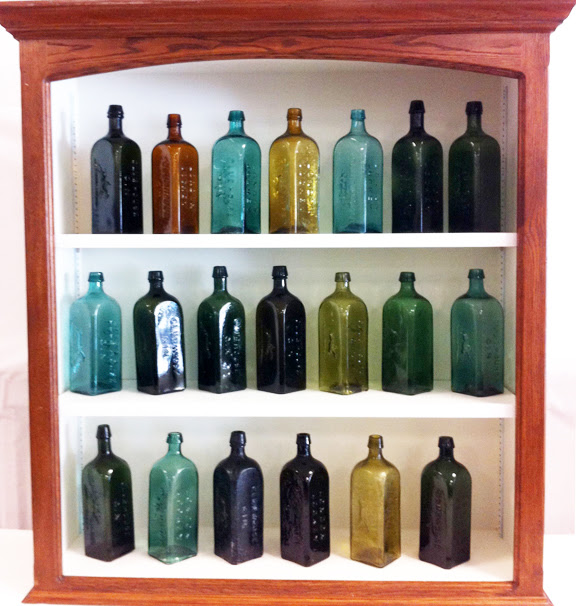The ongoing commentary about
the condition of a western whiskey bottle that was offered at auction recently
- awakened thoughts about how western collectors grade the condition of
bottles and how picky they have become.
The auction houses all
grade their offerings on different platforms. Western collectors usually grade
bottles by the three “C’s”. Color, condition and crudity. Then there are the
folks that grade bottles as if they were coins. Phrases like “absolutely mint” “bold strike” and “PERFECT” are thrown about like loaded dice.
Let’s start right off with defining “mint”. Mint condition is an expression used in the description of pre-owned goods. Originally, the phrase comes from the way collectors describe the condition of coins. Mint is the place where the coin was manufactured. Mint condition is the condition a coin is in as it leaves the mint. Over time, the term "mint" began to be used to describe many different items (including bottles) having excellent, like-new quality.
For a bottle to be mint it must be in the same condition as when it left the factory. Agreed? If you agree with the term mint condition then stress cracks, annealing checks and other in making flaws are acceptable distractions to a bottle, it came from the factory that way didn’t it? . Are you still with me on this or are you collecting “perfect” bottles?
Perfection is a philosophical concept and not necessarily a condition of a piece of glass. If you want a “perfect” bottle then just maybe you will need to improve on what the factory manufactured. There are lots of people in the bottle community that can take your bottle from mint to perfect and most all of them charge for it. Cleaning, polishing, removing chips, gluing on tops…you get the drift.
As a collector matures and becomes more sophisticated he starts to appreciate the character of a collectible piece. Whether it is the unique handmade appearance, apparent in-making flaws or just an honest wear pattern, the not so perfect has become perfect in his or her eyes.
Let’s start right off with defining “mint”. Mint condition is an expression used in the description of pre-owned goods. Originally, the phrase comes from the way collectors describe the condition of coins. Mint is the place where the coin was manufactured. Mint condition is the condition a coin is in as it leaves the mint. Over time, the term "mint" began to be used to describe many different items (including bottles) having excellent, like-new quality.
For a bottle to be mint it must be in the same condition as when it left the factory. Agreed? If you agree with the term mint condition then stress cracks, annealing checks and other in making flaws are acceptable distractions to a bottle, it came from the factory that way didn’t it? . Are you still with me on this or are you collecting “perfect” bottles?
Perfection is a philosophical concept and not necessarily a condition of a piece of glass. If you want a “perfect” bottle then just maybe you will need to improve on what the factory manufactured. There are lots of people in the bottle community that can take your bottle from mint to perfect and most all of them charge for it. Cleaning, polishing, removing chips, gluing on tops…you get the drift.
As a collector matures and becomes more sophisticated he starts to appreciate the character of a collectible piece. Whether it is the unique handmade appearance, apparent in-making flaws or just an honest wear pattern, the not so perfect has become perfect in his or her eyes.
If you are looking for
western whiskies without issues my advice is to start collecting turn of the
century tool tops. There are plenty of rare and desirable “perfect” western
tool top whiskies to put on your shelf.












